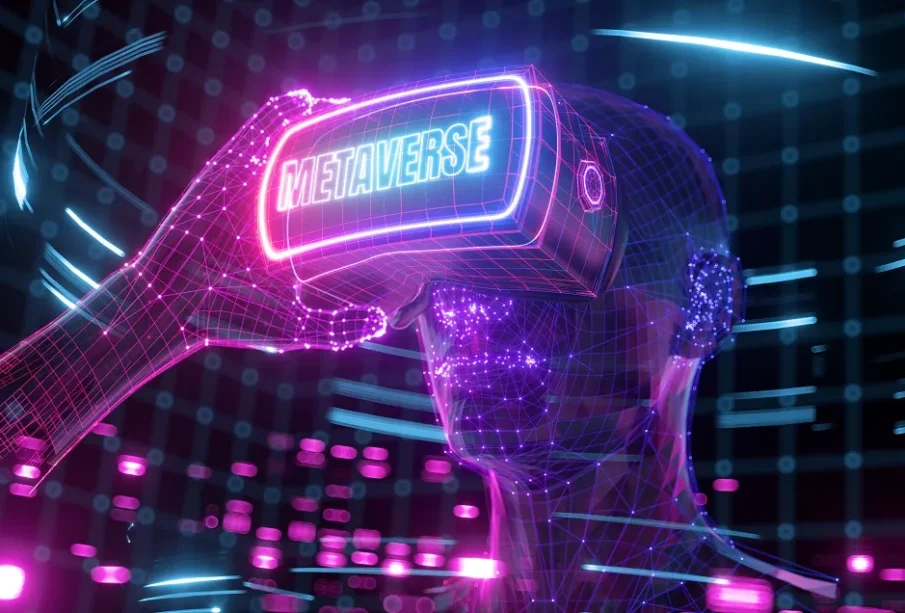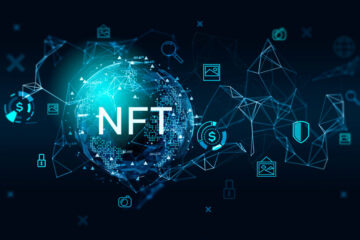What is the Metaverse?

The metaverse integrates the achievements of the information revolution (5G/6G), the internet revolution (Web 3.0), the artificial intelligence revolution, and virtual reality technologies—including VR, AR, MR, and game engines—offering the possibility of building a holographic digital world parallel to the physical one. It drives interactions among information science, quantum science, mathematics, and life sciences, transforming scientific paradigms; it challenges traditional philosophy, sociology, and humanities frameworks; it encompasses all digital technologies, including blockchain; and it enriches digital economy models by blending DeFi, IPFS, and NFTs.
1. The Concept of the Metaverse
2021 is often called the “Year of the Metaverse,” but the ideas, concepts, and technologies behind it didn’t emerge overnight. They’ve been evolving for over 70 years through human imagination, research, and experimentation.
The term “Metaverse” was coined in Neal Stephenson’s 1992 sci-fi novel Snow Crash. It described a virtual reality-based internet world—a sprawling virtual city along a single road, encircling a featureless, black, perfectly spherical planet. In this world, users could buy virtual land, develop buildings, and interact via high-quality personal or public VR goggles, living through avatars with walking or vehicles as transport, mirroring real-world experiences.
The metaverse isn’t a single technology but an idea and concept. It’s a virtual world created and linked through technology, mapping and interacting with the physical world, and forming a digital living space with a novel social system. Today, the metaverse is seen as the realization of Web 3.0, relying on blockchain to create a truly decentralized digital world through technologies like blockchain and NFTs.
2. Key Features of the Metaverse
1. Immersive Experience
The hallmark of the metaverse is its immersive, participatory experience. Users engage through augmented reality (AR), virtual reality (VR), and mixed reality (MR), elevating the 2D, flat internet experience to 3D, 4D, or beyond. Beyond gaming and social platforms, this immersion will extend to integrated online-offline applications.
The metaverse is a fully functioning world, spanning reality and virtuality, always online, where countless people can participate simultaneously and interact seamlessly.
2. Decentralization
The metaverse relies on decentralized technologies like blockchain to create new ways of acquiring and distributing digital and smart assets. Decentralization avoids centralized control that could harm participants’ rights. Many so-called “pseudo-metaverse” projects, hyped for profit, blur this distinction, leading some to mistake today’s internet for the metaverse.
A true metaverse must be decentralized. Without open-source protocols, on-chain assets, and privacy protections, it’s no different from platforms like QQ Space. Decentralization is the foundation, enabling creators to collaboratively build an open metaverse.
3. Privacy
Privacy is a core pillar of the metaverse, supported by cryptocurrency-based economic systems. Built on blockchain, the metaverse inherits features like distributed ledgers. Technologies such as blockchain, privacy computing, and decentralized identity (DID) form the backbone of privacy protection.
Beyond technology, regulation is essential for privacy. Distributed systems and self-governance will enable effective privacy protection and efficient oversight in the metaverse.
4. Openness
The metaverse is highly open, welcoming users worldwide to enter and exit freely and embracing diverse fields to foster a rich, varied ecosystem. Compatible devices and low barriers to entry will drive real-time user participation.
Open avatar design allows users to break free from physical appearances, pursuing stronger self-expression. Avatars enhance social engagement, boost confidence, and enable freedoms like expression and trading.
3. The Metaverse and NFTs
NFTs are a key gateway to the metaverse, as both leverage blockchain to create a transparent, fair virtual world. Through NFT-based virtual assets, users can play games, shop, and socialize in the metaverse. NFTs will also enhance metaverse gaming, with their role growing as new crypto-economic models emerge.
1. Avatar NFTs
The concept of “avatar” originates from Hinduism, meaning “descent.” In Snow Crash, avatars are described as: “People’s digital representations in software, used to communicate in the metaverse.” Avatars are the interface bridging reality and the metaverse, serving as unique digital identities.
Notable avatar NFT projects include Meebits, created by Larva Labs (the team behind CryptoPunks). As 3D models, Meebits integrate with various virtual worlds, allowing users to interact via their avatars. Another project, CLONE X by RTFKT Studios, offers 3D NFT models usable across metaverse platforms, AR filters, Zoom calls, and games, playing a vital role in the expanding metaverse.
2. GameFi
Games are an ideal way to introduce users to the metaverse, immersing them in virtual environments. NFTs enhance participation by granting players full ownership and control of assets, ensuring a fair gaming experience.
GameFi is a direct window into the metaverse. Axie Infinity, one of the largest blockchain games and NFT projects, popularized the Play-to-Earn (P2E) model, where players earn income through gameplay. Despite its simple pet-breeding and battling mechanics, Axie’s success lies in its revolutionary ecosystem design. Similarly, The Sandbox allows players to buy gear to customize avatars, build spaces, create NFTs, develop games, and trade assets.
3. Virtual Land
The metaverse operates as a virtual digital city, requiring land for events like art exhibitions or concerts. Projects like Decentraland and The Sandbox lead this space. Decentraland is a virtual platform where users can buy land, build houses, decorate, open stores, or trade real estate, exploring as avatars.
LAND in The Sandbox is a digital real estate NFT, representing a plot in a blockchain-based virtual world. Proven to store value, it ranks among top metaverse projects. Owners can host concerts, exhibitions, or digital offices on their land.
4. Brands
Brands are entering the metaverse. Adidas Originals launched its Into the Metaverse NFT project in collaboration with partners, granting holders exclusive access to Adidas experiences and products. Buyers receive both NFTs and physical items like tracksuits, hoodies, and hats. In The Sandbox, holders can wear related virtual gear.
RTFKT Studios focuses on metaverse-native products, combining game engines, NFT authentication, blockchain, and AR to create and sell digital fashion items, dominating the virtual fashion industry.
4. Real-World Applications of the Metaverse
Fans of Ready Player One may recognize the metaverse from the film’s “Oasis,” a virtual world accessed via VR headsets. Oasis is both a massive multiplayer online game and a virtual society, perfectly embodying the metaverse. Customizable avatars, skills, and cyberpunk cityscapes fuel our imagination about the future. So, how is the metaverse applied—or will it be applied—in real life?
1. Gaming
As simulations of reality, games are likely the first major metaverse application. Games and the metaverse share a mutual appeal as virtual environments. The metaverse brings real-world authenticity to games, where equipment and currencies have real monetary value. Players can build their own spaces and even influence game rules or development by holding governance tokens.
2. Commerce
Retailers and brands like Gucci, Balenciaga, Nike, and Adidas are quietly entering the metaverse. For example, Walmart filed trademarks with the U.S. Patent and Trademark Office in late 2021 for metaverse-related sales, digital currency products, and crypto investments.
3. Education
The metaverse enables virtual field trips to any place or historical era. It simplifies and enriches learning by removing spatial and equipment constraints, addressing resource scarcity and inequality. Creative classrooms can thrive, enhancing both the quality and scale of education, freeing learning from physical campuses.
4. Real Estate
The metaverse allows realistic virtual home tours, enabling buyers to view properties worldwide from home. NFT-based virtual real estate is also an emerging market.
5. Music
Metaverse concerts offer fans a new way to engage with artists. Unlike traditional concerts with limited viewing angles and interaction, metaverse concerts let fans participate via avatars, interact closely with idols, and collect NFT-based tickets, virtual props, or digital merchandise. Artists like those performing in Decentraland, The Sandbox, or Fortnite have hosted memorable metaverse concerts.
6. Art
Creators and businesses can build online galleries in the metaverse for visitors to explore, with direct links to platforms like OpenSea for trading. Owners can showcase and sell NFT art at auctions.
7. Work
The metaverse supports virtual office platforms, where users collaborate in 3D simulated environments. Crypto companies can establish digital offices for meetings and teamwork. Remote work, popularized during the COVID-19 pandemic, faces challenges like limited real-time interaction and low communication efficiency. The metaverse enables face-to-face virtual collaboration.
8. Film
Traditional 2D and 3D cinema experiences are no longer enough for audiences. While 4D motion theaters address some limitations, metaverse-powered immersive cinemas take experiences to new heights. Multi-user virtual theaters enhance viewer engagement.
Though still in its early stages, the metaverse is advancing with digital technology, improved computing power, and gaming’s growth, merging reality and digital worlds. Despite the challenges ahead, immersive experiences will replace traditional interfaces. Combined with NFTs and decentralization, the metaverse will uncover the value of individuals and assets, expanding consumption scenarios and redefining digital asset value across industries.









